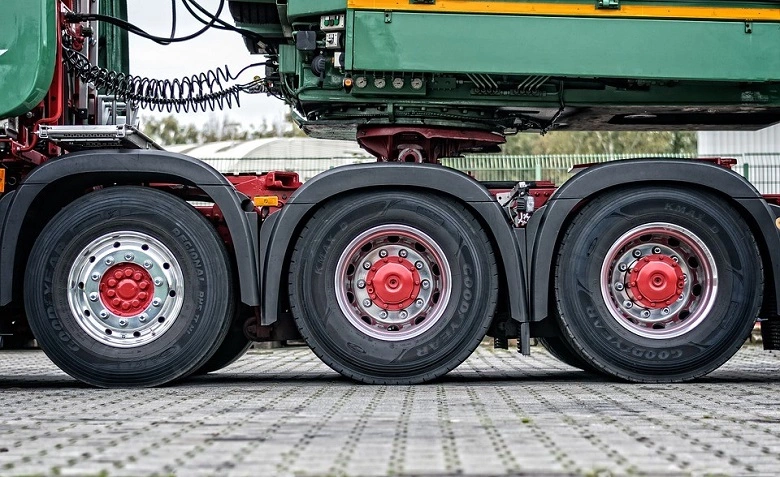Different trucks carry different types of load. For example, light trucks can carry produce to a farmers’ market, while heavy trucks can carry a tiny home anywhere. Tire-industry guidelines allow tires to carry heavier loads at slower speeds. Slowing down also offers a fuel-efficiency bonus.
Additionally, different factors determine the load weight limit, so using the load-inflation infographics and tables published by tire manufacturers will determine the proper tire pressure based on the specific load. Maintaining proper tire air pressure is the most effective way to control truck tire wear, lengthen casing life, and improve tire performance. Also, knowing the proper respective tire air pressure for light truck tires and heavy truck tires is a must.
Heat and Other Factors
According to Tim Miller of Goodyear Commercial Tire, “Heat is a tire’s greatest enemy; it causes a tire’s components to deteriorate and may even damage the steel cords… Insufficient inflation also hurts fuel economy, since an under-inflated tire forces truck engines to work harder.” When under-inflated tires run, they produce excessive internal heat due to sidewalls’ increased flexing and a longer tire footprint due to more rubber tread on the road. As a result, it can be quite dangerous.
However, an underinflated tire is always much more serious than a few psi overinflated tire. Too much air creates a handful of performance and handling issues, but too little air pressure is far more common and expensive. In addition, under-inflated tires flex more as they roll down the road, resulting in increased friction that raises the rubber’s temperature. Too much heat eventually leads to tire failure.
Ambient temperature also affects tire air pressure. Recommended inflation pressure drops one pound for every 10-degree increase in ambient temperature. Tire pressure can vary at different times of the day. If a driver stops his vehicle for a quick iced coffee break in the summer, checks his tire pressure, and finds it is now up to 117 psi from its original 105 psi. This is because the summer heat can cause increased tire pressure.
Once the driver gets back on the highway, he runs for another hour before checking the tire pressure again; the pressure is still 117 psi. The tire has reached a steady-state condition and will stay at the same pressure assuming all operating conditions, including ambient or outside temperature, remain the same. But, the road surface will also impact the tire pressure. For instance, the surface temperature of asphalt is usually hotter than concrete and may increase the tire pressure by another one or two psi. Now the tire pressure may reach 119 psi due to this. Vehicle speed can then increase tire pressure even further.
However, one need not be concerned about tire “overinflation.” Tires are designed to take all the different variables out on the road into account, and commercial radial truck tires are designed, developed, and tested with these variables in mind.
Tire companies state in their literature never to check a hot tire for pressure. One can think that the hot tire is overinflated when it is perfectly normal or adapting normally. So don’t take the air out of a hot tire! Truck tires can take several hours to revert to their original pressure. Therefore, it is recommended to check a vehicle’s tire pressures first thing in the morning after the tires have cooled down overnight.
Pressure and Effectiveness
The truck’s proper tire pressure can vary with the axle load, the number of tires per axle, the truck’s typical cruising speed, and even the weather or temperature. Based on the worst or heaviest vehicle load, fleets determine their recommended tire pressure.
Since loads vary by wheel position, the load-inflation tables published by any tire manufacturer dictate proper tire pressure based on specific loads for proper tire efficiency and overall effectiveness. Several fleets have different air pressure specifications for different conditions or tire types (steering, driving, trailer, etc.). Load-inflation tables are based on 70 degrees Fahrenheit (F) ambient temperature.
Remember, even perfect tires and rims lose air – as much as two psi worth of air molecules can work their way right out through tire rubber. To have an effective tire management program means one must check all inflation pressures and visually inspect tires monthly or more regularly.
Author’s Bio: Frank is an energetic salesman. He spends his time writing and reading about quality tires and vehicular parts on his free days. He says it’s because of his love for cars ever since he was a kid when his dad started teaching him about automotive parts.
